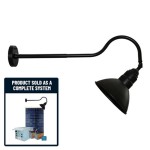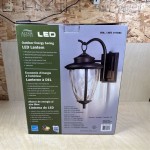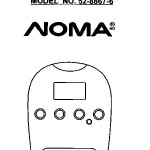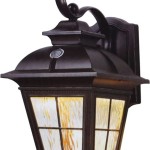The Best Indoor Outdoor Projector: A Comprehensive Guide
Choosing the best projector for both indoor and outdoor use requires careful consideration of several factors. Projectors designed for versatile applications need to balance brightness, resolution, portability, and durability to provide an optimal viewing experience in diverse environments. This article provides a detailed overview of key considerations and features to look for when selecting a projector suitable for both indoor and outdoor settings.
Brightness (Lumens)
Brightness, measured in lumens, is arguably the most critical factor when selecting a projector for both indoor and outdoor use. Lumens represent the amount of light the projector emits. A higher lumen count is necessary for outdoor projection, where ambient light is prevalent. Indoor environments, with controlled lighting, generally require fewer lumens.
For indoor use, a projector with 1500 to 2000 lumens may suffice, especially in darkened rooms. However, for outdoor use, particularly during dusk or in areas with street lighting, a projector with at least 3000 lumens is recommended. For optimal viewing in brighter outdoor conditions, a projector with 4000 lumens or more may be necessary. It is important to note that the perceived brightness can also be affected by the screen size and the ambient light levels. Larger screens require more lumens to maintain image clarity and vibrancy.
Projector brightness is often specified as either ANSI lumens or LED lumens. ANSI lumens are a standardized measurement and are generally considered more reliable for comparing projector brightness across different brands and models. LED lumens, on the other hand, are often used by manufacturers to market LED-based projectors, and these values may not directly correlate with ANSI lumen ratings. When comparing projectors, it is advisable to prioritize models that provide ANSI lumen specifications for accurate comparison.
Beyond the specified lumen rating, factors like the projector's contrast ratio also contribute to the perceived brightness. A higher contrast ratio means a greater difference between the darkest blacks and the brightest whites, resulting in a more vivid and detailed image, even in environments with some ambient light.
Resolution and Image Quality
Resolution refers to the number of pixels that make up the projected image. Higher resolution translates to a sharper, more detailed picture, especially when projecting onto larger screens. Common projector resolutions include 720p (HD), 1080p (Full HD), and 4K (Ultra HD). The resolution of the projector should be selected based on the content being viewed and the desired viewing experience.
For general-purpose viewing, such as watching movies or TV shows, a 1080p projector typically provides a satisfactory level of detail. However, for more demanding applications, such as gaming or viewing high-resolution images, a 4K projector offers a significantly sharper and more immersive experience. While 4K projectors are generally more expensive than lower-resolution models, the improvement in image quality can be substantial, especially when projecting onto larger screens.
The projector's contrast ratio, as mentioned previously, also plays a vital role in image quality. A higher contrast ratio results in deeper blacks and brighter whites, leading to a more dynamic and lifelike picture. Look for projectors with a contrast ratio of at least 2000:1, and ideally higher, for optimal image quality.
In addition to resolution and contrast ratio, other factors that can affect image quality include color accuracy and image processing capabilities. Projectors with wider color gamuts and advanced image processing technologies can deliver more accurate and vibrant colors, resulting in a more realistic and engaging viewing experience. Consider projectors that support HDR (High Dynamic Range) content, which can further enhance image quality by providing a wider range of contrast and colors.
Portability and Connectivity
For a projector intended for both indoor and outdoor use, portability is a crucial consideration. A lightweight and compact projector is easier to transport and set up in different locations. Consider the projector's weight and dimensions, as well as the availability of a carrying case, when evaluating its portability.
Connectivity options are also essential. A projector should ideally have a variety of ports, including HDMI, USB, VGA, and audio inputs, to accommodate different devices. HDMI ports are particularly important for connecting modern devices such as Blu-ray players, gaming consoles, and laptops. USB ports allow for direct playback of media files from USB drives. VGA ports are useful for connecting older devices that may not have HDMI outputs.
Wireless connectivity, such as Wi-Fi and Bluetooth, can also be beneficial. Wi-Fi connectivity allows for streaming content directly from the internet, while Bluetooth connectivity enables wireless connection to speakers or headphones. Some projectors also offer screen mirroring capabilities, allowing you to wirelessly project content from your smartphone or tablet.
Consider the projector's built-in speaker system. While a built-in speaker may be adequate for casual viewing, an external speaker system is generally recommended for a more immersive and high-quality audio experience, especially for outdoor use. Ensure the projector has an audio output, such as a 3.5mm headphone jack or Bluetooth connectivity, to connect to external speakers.
Durability and Environmental Considerations
When using a projector outdoors, it is important to consider its durability and resistance to environmental factors. Projectors are generally not designed to be used in direct sunlight or rain, but some models are more rugged and resistant to dust and moisture than others.
Look for projectors that are rated for outdoor use or that have features such as a sealed optical engine to protect against dust and moisture. Consider using a projector enclosure or cover to provide additional protection from the elements. It is also important to ensure that the projector is placed on a stable and level surface to prevent it from tipping over.
Temperature is another important consideration. Projectors generate heat during operation, and extreme temperatures, both hot and cold, can affect their performance and lifespan. Avoid using projectors in direct sunlight or in extremely hot or cold environments. Allow the projector to cool down completely before storing it after use.
Power source is also a crucial consideration. For indoor use, a standard AC power outlet is typically sufficient. However, for outdoor use, you may need to use a portable power station or generator to provide power to the projector. Consider the projector's power consumption when selecting a power source.
Throw Ratio and Keystone Correction
Throw ratio refers to the distance required between the projector and the screen to achieve a specific image size. Projectors with a short throw ratio can project a large image from a relatively short distance, making them suitable for smaller rooms or outdoor spaces where space is limited. Projectors with a long throw ratio require a greater distance between the projector and the screen, making them more suitable for larger rooms or outdoor spaces.
Keystone correction is a feature that allows you to adjust the shape of the projected image to compensate for the projector not being perfectly aligned with the screen. Keystone correction is particularly useful when projecting onto uneven surfaces or when the projector is placed at an angle to the screen. Look for projectors that offer both vertical and horizontal keystone correction for maximum flexibility.
Some projectors also offer zoom functionality, which allows you to adjust the size of the projected image without moving the projector. Zoom functionality can be useful for fine-tuning the image size to fit the screen or viewing area.
Consider the placement options for the projector. Some projectors can be mounted on the ceiling, while others are designed to be placed on a table or stand. Ceiling-mounted projectors are generally more stable and secure, but they require more installation effort. Tabletop projectors are more portable and easier to set up, but they may be more susceptible to being knocked over.
Lamp Life and Maintenance
Projector lamps have a limited lifespan, typically ranging from 2,000 to 5,000 hours. The lamp life is affected by factors such as the projector's brightness setting and the usage environment. When the lamp reaches the end of its lifespan, it will need to be replaced.
Consider the cost of replacement lamps when selecting a projector. Some projectors use more expensive lamps than others. Also, consider the availability of replacement lamps. Some projector models may be discontinued, making it difficult to find replacement lamps.
LED-based projectors generally have a longer lifespan than lamp-based projectors, often lasting for 20,000 hours or more. LED projectors also consume less power and generate less heat than lamp-based projectors, making them more energy-efficient and environmentally friendly.
Regular maintenance can help to extend the lifespan of the projector and maintain its performance. Clean the projector's lens regularly with a soft, lint-free cloth. Avoid touching the lens with your fingers. Keep the projector's air vents clean to prevent overheating. Store the projector in a cool, dry place when not in use.
By carefully considering these factors, selecting the best indoor/outdoor projector for specific needs and preferences becomes a much more informed and effective process. Prioritizing brightness, resolution, portability, durability, and connectivity ensures that the chosen projector will deliver a high-quality viewing experience in a variety of indoor and outdoor environments.

The Best Outdoor Projectors In 2024 Popular Science

The Best Outdoor Projectors For 2024 Pcmag

The Best Projectors For 2024 Reviews By Wirecutter

The Best Outdoor Projectors For 2024 Pcmag

The Best Outdoor Projectors For 2024 Pcmag

The 3 Best Outdoor Projector Screens Of 2024 Reviews By Wirecutter

The Best Outdoor Projectors In 2024 Popular Science

The Best Outdoor Projectors For 2024 Pcmag

Best Bright Budget Friendly Outdoor Projectors Projector Reviews

The 5 Best Projector Screens Of 2024 Zdnet
Related Posts







